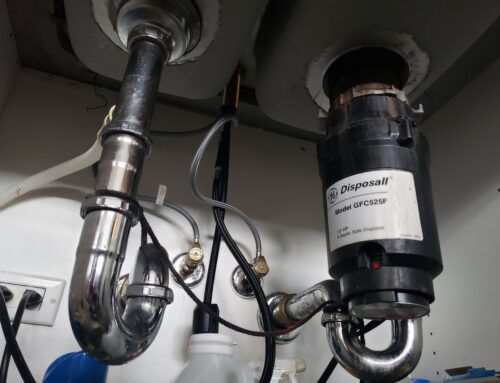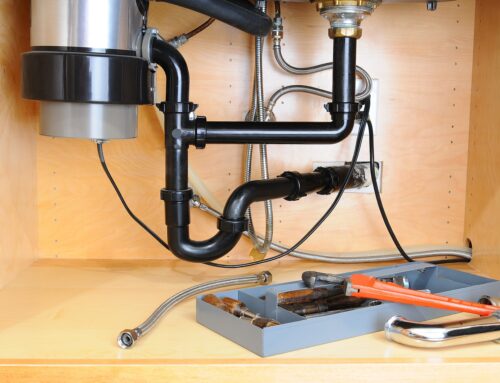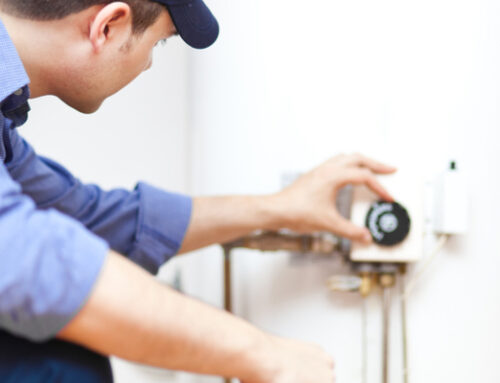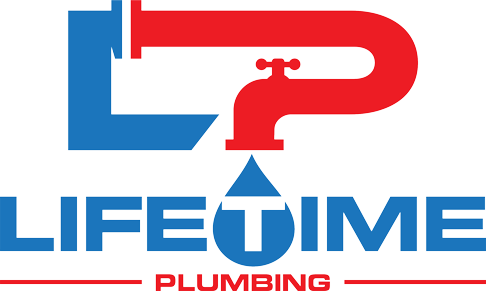Table of Contents
- 1 Plumbing Fixtures Installation
- 2 The Benefits of Professional Plumbing Fixtures Installation
- 3 Types of Plumbing Fixtures and Considerations for Choosing the Right Ones
- 4 Plumbing Fixture Installation – The Planning Phase
- 5 Essential Tools, Materials, and Preparations for a Successful Installation
- 6 A Step-by-Step Guide to Installing Common Plumbing Fixtures
- 7 The Pros and Cons of DIY Plumbing Fixture Installation
- 8 Common Challenges in Plumbing Fixture Installation: Troubleshooting Tips
- 9 Exploring Modern Trends in Plumbing Fixtures: Design and Technology Innovations
- 10 The Importance of Water Efficiency in Choosing Fixtures
- 11 Maintaining Your Plumbing Fixtures for Longevity and Performance
- 12 Knowing When It’s Time to Replace or Upgrade Your Fixtures
- 13 Reliable Plumbing Fixture Installation Services in Chicago and Surrounding Areas
- 14 Conclusion
Plumbing Fixtures Installation
Plumbing fixtures are essential components of any home’s plumbing system, encompassing a diverse range of items such as faucets, sinks, toilets, showers, bathtubs, and water heaters. They play a crucial role in ensuring the functionality and convenience of everyday activities like cooking, cleaning, and personal hygiene. Professional installation of these fixtures is paramount for long-term performance and functionality.
A professional installation offers several advantages:
- Ensures proper installation to prevent leaks and water damage
- Extends the lifespan of fixtures
- Promotes water efficiency for environmental sustainability and utility savings
By understanding the significance of plumbing fixture installation, homeowners can make informed decisions to enhance their living spaces while prioritizing durability and efficiency.
The Benefits of Professional Plumbing Fixtures Installation
When it comes to plumbing fixture installation, it’s important to recognize the value of seeking professional assistance. Hiring a professional plumber for your plumbing fixture installation needs in the Chicago and surrounding areas can offer you numerous benefits that go beyond initial cost savings. Here are some key advantages of professional plumbing fixture installation:
1. Preventing Leaks, Water Damage, and Costly Repairs
One of the primary benefits of professional plumbing fixture installation is the prevention of leaks and water damage. Improperly installed fixtures can lead to leaks that may go unnoticed until they cause significant damage to your home. Our proffesional plumbers have the expertise to ensure a proper and secure installation, minimizing the risk of leaks and potential water damage. By addressing these issues proactively through professional installation, you can avoid costly repairs in the future.
2. Ensuring Proper Functionality and Extended Lifespan of Fixtures
At Lifetime Plumbing, our expert plumbers understand the intricacies of different plumbing fixtures and have the knowledge to install them correctly. We know how to connect pipes, valves, and fittings properly to ensure optimal functionality. With our expertise, we can also identify any potential issues that may affect the lifespan of your fixtures and address them during installation. This attention to detail helps extend the lifespan of your fixtures and ensures they perform at their best.
3. Promoting Water Efficiency for Environmental Sustainability and Utility Savings
Water efficiency is a crucial aspect of modern plumbing fixture installation. Our team of plumbers can guide you in choosing water-saving fixtures that conserve water without compromising performance. We can recommend low-flow toilets, aerated faucets, and other water-efficient options that help reduce your environmental footprint while saving you money on utility bills. Additionally, we can advise on other water-saving measures such as installing pressure-reducing valves and recommending efficient water heater models.
By investing in professional plumbing fixture installation, you can enjoy the peace of mind that comes with knowing your fixtures are installed correctly and will function optimally for years to come. Preventing leaks, water damage, and costly repairs, ensuring proper functionality and extended lifespan of fixtures, and promoting water efficiency are all significant benefits that professional installation provides. So, when it comes to your plumbing fixtures, don’t hesitate to enlist the expertise of our professional plumbers in Chicago.
Types of Plumbing Fixtures and Considerations for Choosing the Right Ones
Plumbing fixtures are essential components of your home’s plumbing system. They not only serve functional purposes but also contribute to the overall look and feel of your space. When it comes to choosing the right fixtures, here are some key factors to keep in mind:
Faucets/Taps
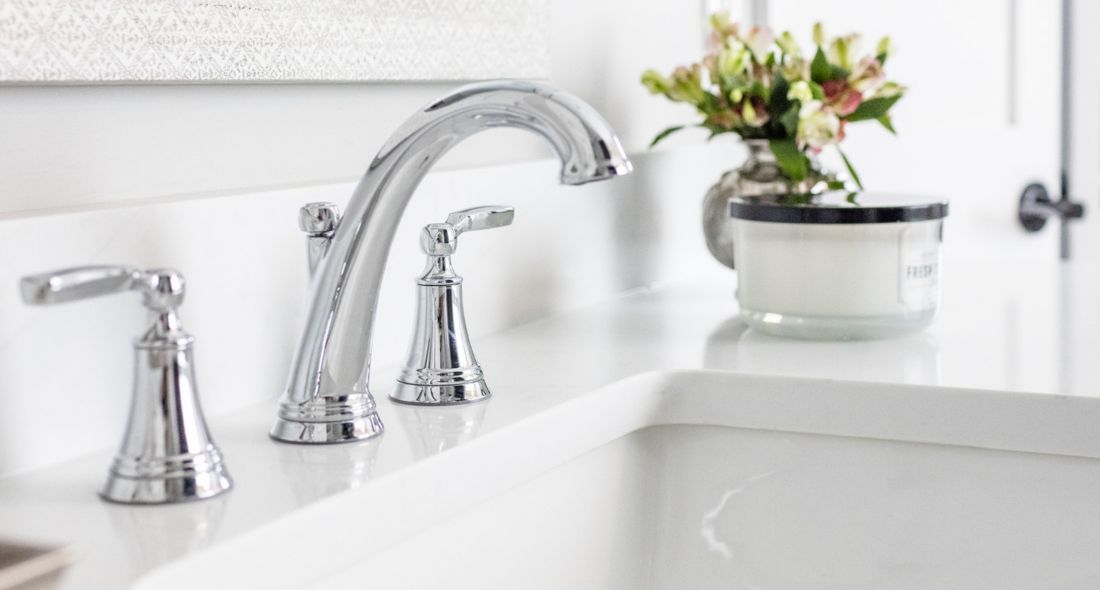
Faucets or taps are available in various styles and finishes, offering both functionality and visual appeal. Whether you prefer a classic design or a more modern touchless option, faucets can make a significant difference in your kitchen or bathroom. Consider factors such as:
- The style that best matches your overall decor
- The finish that complements other fixtures in the room
- The type of handle (single or double) that suits your preference
Sinks/Basins
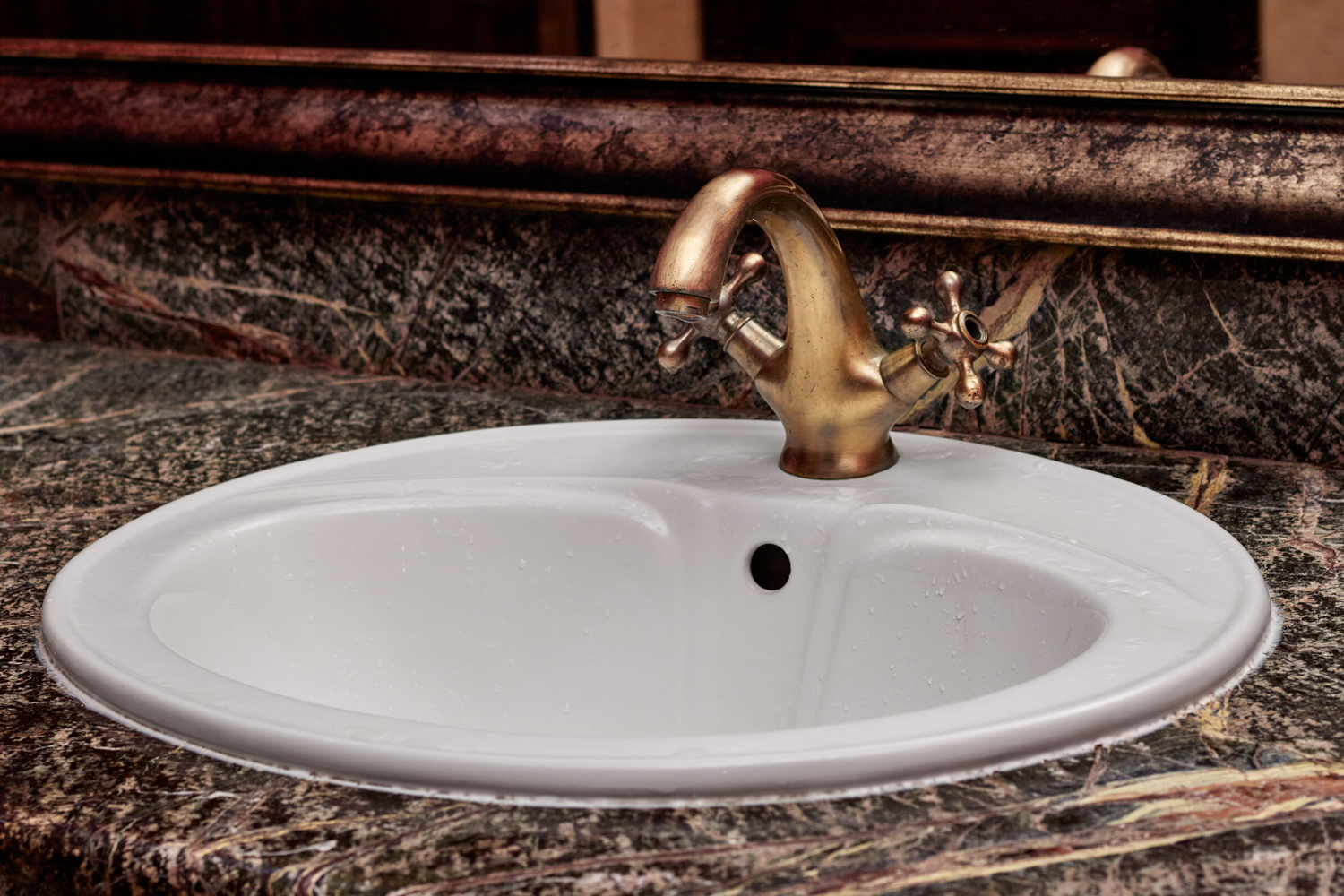
Sinks come in different materials such as porcelain, stainless steel, and glass. They not only serve as functional spaces for washing dishes or hands but also add aesthetic value to your kitchen or bathroom. Here are some considerations when choosing a sink:
- The durability of the material
- The maintenance requirements
- The size and depth that suit your needs
- The compatibility with your countertops
Toilets
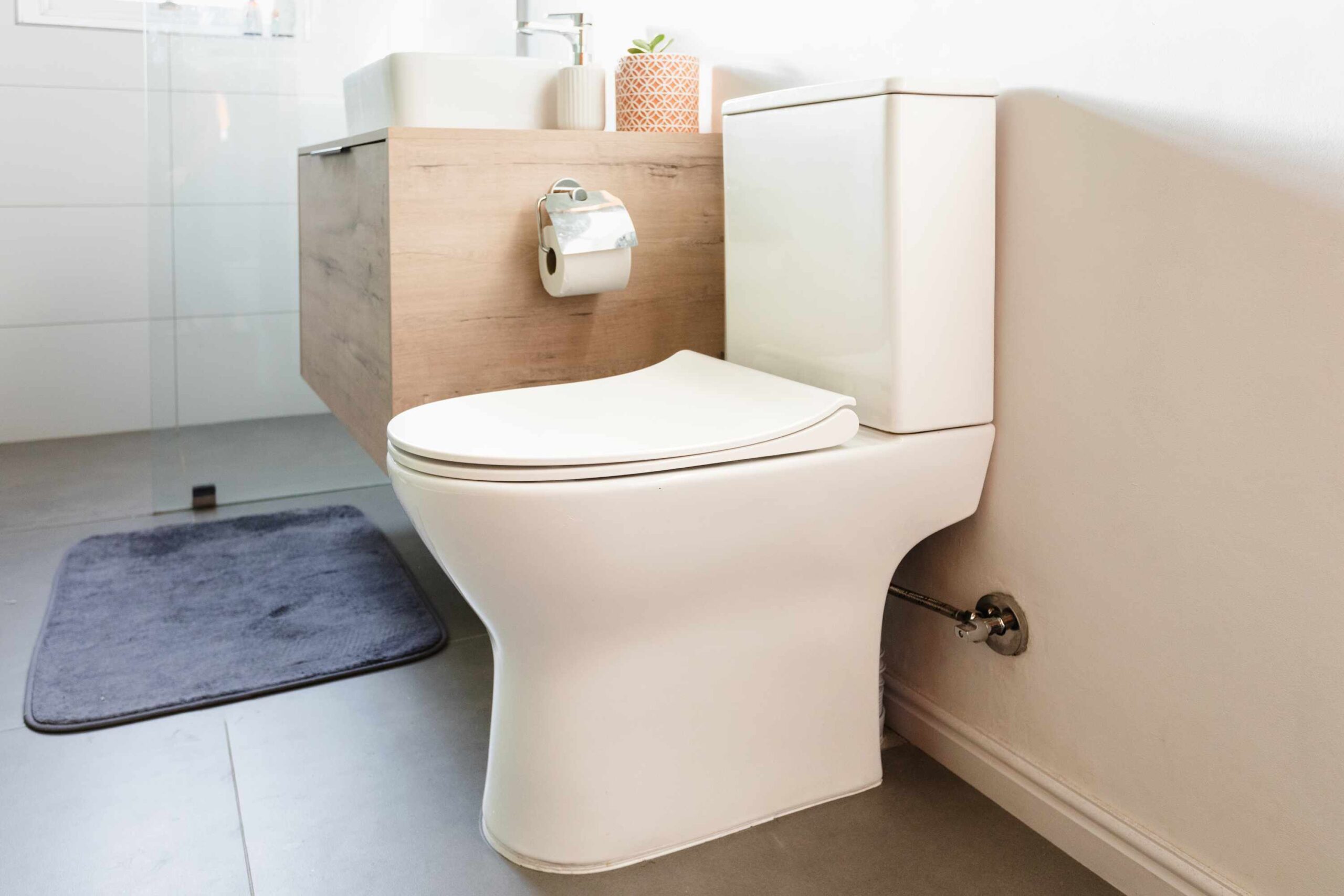
Toilets have evolved over the years to offer more efficient and comfortable options. From water-saving models to smart toilets with advanced features, there are plenty types of toilets available. Here’s what you should think about when selecting a toilet:
- The flushing mechanism (gravity-fed or pressure-assisted)
- The water usage (look for low-flow toilets)
- The design features that match your bathroom style
- The height and shape for optimal comfort
Showers/Bathtubs
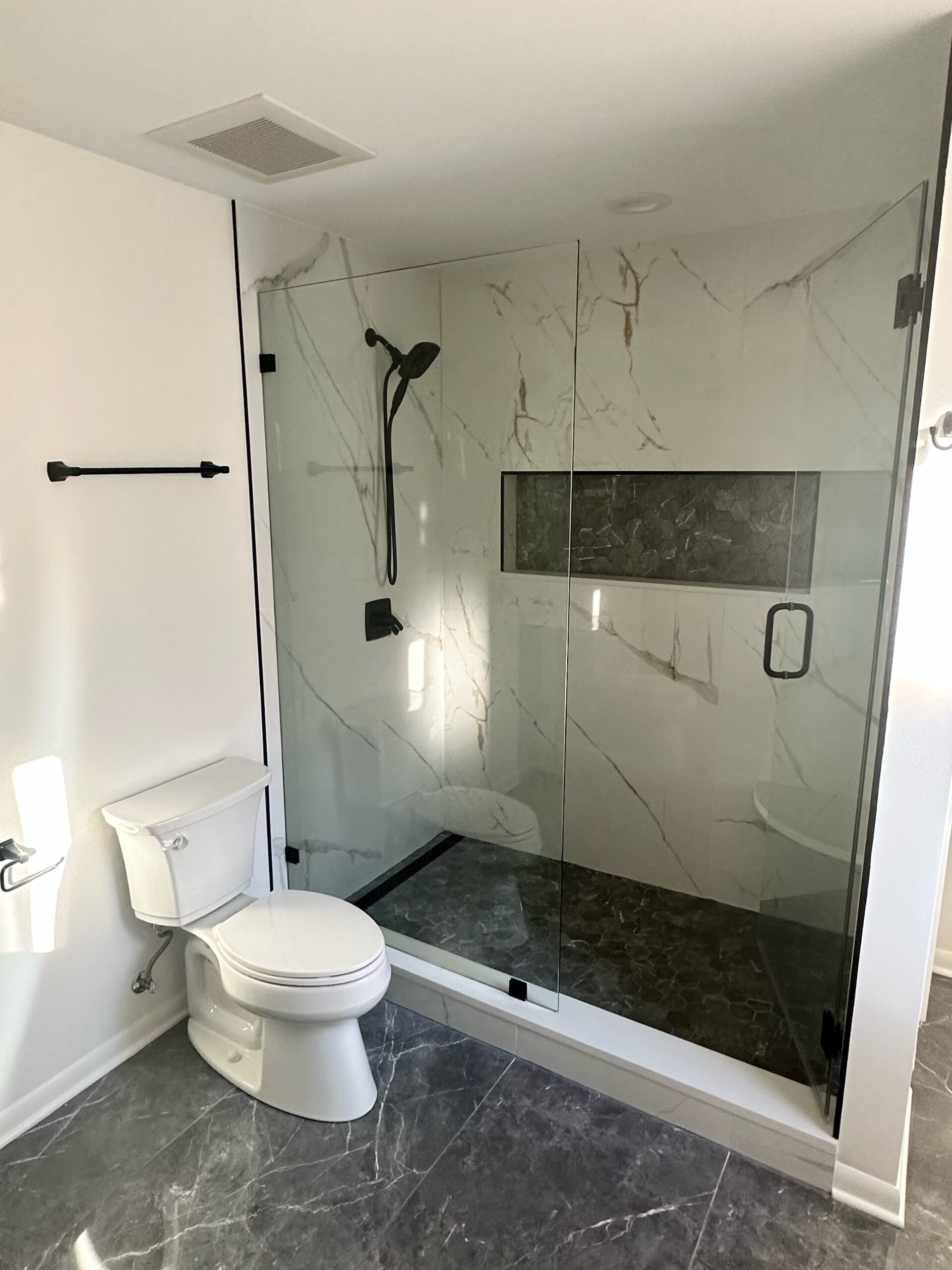
Showers and bathtubs are key fixtures in any bathroom. When deciding between the two or choosing specific models, consider factors such as:
- The available space in your bathroom
- The water usage (showers generally consume less water)
- The accessibility features (handrails, seating options)
- The safety measures (non-slip surfaces, thermostatic controls)
Water Heaters
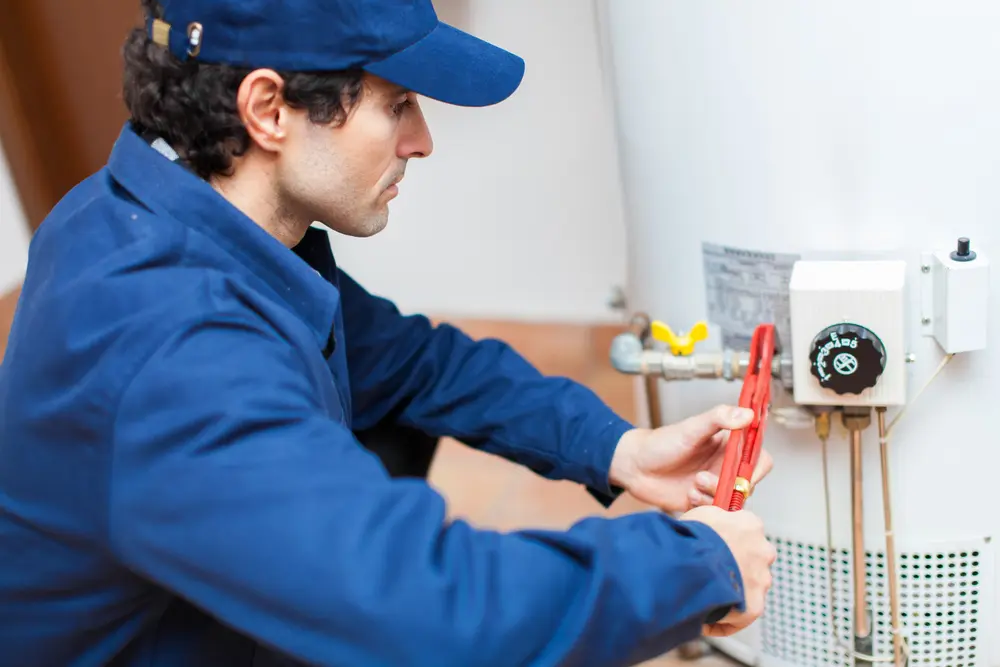
Water heaters are responsible for providing hot water to your faucets, showers, and appliances. While traditional tank-based heaters are still widely used, tankless heaters have gained popularity due to their energy-saving benefits. Here’s what you should know about water heaters:
- Tank-based water heaters store and heat a specific amount of water continuously.
- Tankless water heaters heat water on demand, eliminating the need for storage tanks.
- Consider the size, energy efficiency, and installation requirements of each type.
Related: The Basics About Water Heaters: Types, Parts and How They work
Style vs. Functionality
When it comes to choosing plumbing fixtures, there’s often a trade-off between style and functionality. While it’s important to create a visually appealing space, you shouldn’t compromise on usability. Here are some tips for striking the right balance:
- Prioritize functionality in high-traffic areas like the kitchen or main bathroom.
- Explore different styles and finishes that align with your personal taste.
- Look for brands or models that offer both aesthetic appeal and reliable performance.
Plumbing Fixture Installation – The Planning Phase
When planning your plumbing fixture installation, it’s essential to carefully assess your needs and seek professional guidance to ensure a successful project. Here are some key points to consider during the planning phase:
Evaluating Your Plumbing Needs and Goals for the Project
This involves addressing any existing issues in your plumbing system, such as water leaks, low water pressure, or outdated fixtures. Additionally, consider accommodating potential future renovations or expansions when choosing your fixtures. By evaluating your current and future needs, you can make informed decisions that align with your long-term goals for your home.
Balancing Style Preferences with Practicality in Choosing Fixtures
While it’s important to select fixtures that match your aesthetic preferences and complement the overall design of your space, practical considerations should not be overlooked. Prioritize functionality, durability, and water efficiency when making your selections to ensure that the chosen fixtures meet both your stylistic and practical needs.
The Role of a Professional Plumber
Seeking the expertise of a professional plumber is invaluable during the planning phase. Our skilled plumbers in Chicago can provide valuable insights into selecting quality materials that are built to last and recommending fixtures that comply with local building codes and regulations. Our knowledge and experience will help you navigate through the multitude of options available in the market, ensuring that you make informed choices that align with your specific requirements.
Considering Kitchen Remodel Plumbing Edition
If you’re specifically planning a kitchen remodel, it’s crucial to take into account additional considerations related to plumbing. Key considerations for a successful kitchen remodel include factors such as sink placement, appliance connections, and optimizing water flow. By incorporating these aspects into your planning, you can ensure a seamless integration of plumbing fixtures into your kitchen design.
By carefully evaluating your plumbing needs, balancing style preferences with practicality, seeking guidance from our professional plumber, and considering specialized considerations for kitchen remodels, you can lay a solid foundation for a successful plumbing fixture installation project. Contact Lifetime Plumbing for any kitchen plumbing services that you might need.
Essential Tools, Materials, and Preparations for a Successful Installation
When it comes to plumbing fixture installation, having the right tools and materials is essential for a smooth and successful project. Here are some key items you’ll need to ensure a hassle-free installation:
Must-Have Tools for Your Plumbing Toolbox
- Adjustable wrenches: These versatile tools come in various sizes and are perfect for tightening or loosening nuts and bolts.
- Pipe wrench: Designed specifically for working with pipes, a pipe wrench provides a strong grip and leverage.
- Plumber’s tape: Also known as Teflon tape, plumber’s tape helps create a tight seal when connecting pipes and fittings.
- Plunger: An essential tool for clearing clogged drains and toilets.
- Hacksaw: Used to cut through pipes or other materials when necessary.
- Tubing cutter: Ideal for cutting copper or plastic tubing with precision.
- Caulk gun: Necessary for applying caulk or sealant around fixtures to prevent leaks.
- Silicone sealant: Provides a watertight seal between surfaces and prevents water damage.
- Flashlight: A bright flashlight will help you see in dark or confined spaces during installation.
- Gloves and safety glasses: Protect yourself from potential hazards while working.
Other Materials You May Need to Gather
In addition to the essential tools, you’ll need various materials to ensure a successful plumbing fixture installation. These may include:
- Supply lines: Connect the fixtures to the water supply system.
- Drainage pipes: Carry waste water away from sinks, toilets, showers, etc.
- PVC primer and cement: Used for gluing PVC pipes together securely.
- Plumber’s putty: Helps create a watertight seal between certain fixtures and surfaces.
- Anchors and screws: Securely attach fixtures to walls or floors.
- Water supply shut-off valves: Allow you to turn off the water supply when needed.
- Escutcheon plates: Cover unsightly holes or gaps around pipes or fixtures.
Preparing the Worksite for Smooth Fixture Installations
Before you begin the installation process, it’s important to prepare the worksite to ensure a smooth and efficient installation. Here are a few steps to follow:
- Turn off the water supply: Before starting any plumbing work, always remember to turn off the water supply to avoid any accidents or leaks.
- Clear the area: Remove any obstructions or clutter around the fixture installation area to provide easy access and ample workspace.
- Gather tools and materials: Make sure you have all the necessary tools and materials within reach before you start the installation process.
- Protect surfaces: Use drop cloths or towels to protect surfaces from potential damage during installation.
- Follow safety precautions: Wear appropriate protective gear, such as gloves and safety glasses, throughout the installation process.
By having the essential tools, gathering the necessary materials, and properly preparing the worksite, you’ll be well-equipped for a successful plumbing fixture installation.
A Step-by-Step Guide to Installing Common Plumbing Fixtures
When it comes to installing common plumbing fixtures in your home, following a step-by-step guide can help ensure a smooth and successful process. Whether you’re looking to install new faucets/taps, set up a toilet, or replace a showerhead, proper installation is essential for the long-term performance and functionality of these fixtures.
Important: Turn Off the Water Supply!
Before you begin any fixture installation, it’s crucial to turn off the water supply to the specific area where you’ll be working. This helps prevent any accidental leaks or water damage during the installation process.
Installing Faucets/Taps with Confidence
- Remove the old faucet: Use an adjustable wrench to disconnect the supply lines and remove the old faucet from the sink or countertop.
- Clean the area: Thoroughly clean the installation area to ensure a smooth surface for the new faucet.
- Apply plumber’s tape: Wrap plumber’s tape around the threads of the faucet connections to create a secure seal.
- Secure the new faucet: Carefully follow the manufacturer’s instructions to install and secure the new faucet in place.
Setting Up a New Toilet Like a Pro
- Drain the old toilet: Turn off the water supply to the toilet and flush it to drain as much water as possible from the tank and bowl.
- Disconnect water supply: Use an adjustable wrench to disconnect the water supply line from the toilet.
- Remove bolts: Unscrew and remove the bolts securing the toilet to the floor.
- Install new wax ring: Place a new wax ring on the flange to create a seal between the toilet and the waste pipe.
- Secure the new toilet: Carefully position and secure the new toilet in place, ensuring a tight seal with the wax ring.
Showerhead Installation Made Easy
- Unscrew old showerhead: Use an adjustable wrench to unscrew and remove the old showerhead from the shower arm.
- Clean and prepare: Clean any debris or old plumber’s tape from the shower arm threads, ensuring a clean surface for installation.
- Apply plumber’s tape: Wrap fresh plumber’s tape around the shower arm threads to create a tight seal.
- Attach new showerhead: Carefully attach and secure the new showerhead onto the shower arm, ensuring a snug fit.
By following these step-by-step instructions, you can confidently tackle common plumbing fixture installations in your home while ensuring proper functionality and long-term performance.
The Pros and Cons of DIY Plumbing Fixture Installation
Embarking on a DIY plumbing project can be fulfilling and cost-effective, but it’s important to know when to handle a task yourself and when to seek professional assistance.
Knowing When to Tackle a DIY Project and When to Leave It to the Experts
One of the crucial aspects is assessing the complexity of the plumbing fixture installation. While simple replacements like changing faucets or showerheads may be suitable for a confident DIY enthusiast, more complex installations or major repairs should be left to experienced professionals. Recognizing your limitations can save you from costly mistakes and ensure that the job is done right the first time.
Acquiring the Right Skills and Knowledge for DIY Installations or Repairs
Before embarking on any DIY plumbing project, it’s vital to have a solid understanding of plumbing systems, tools, and safety measures. Basic skills in pipe cutting, soldering, and fixture assembly are essential for successful installations. However, if you’re uncertain about any aspect of the project, it’s advisable to consult with a professional plumber for guidance.
While DIY plumbing installations can be empowering and cost-effective for simple tasks, it’s crucial to recognize the limits of your expertise in order to avoid potential hazards or costly mistakes. Acquiring the necessary skills and knowledge through research and preparation is key to ensuring successful outcomes for your projects.
Common Challenges in Plumbing Fixture Installation: Troubleshooting Tips
When it comes to plumbing fixture installation, you may encounter some common challenges along the way. These challenges can range from water pressure issues to compatibility hurdles with existing plumbing systems. However, with the right knowledge and troubleshooting tips, you can overcome these obstacles and ensure a successful installation.
Dealing with Water Pressure Issues Effectively
Water pressure problems can arise during the installation of plumbing fixtures. Whether you’re experiencing high or low water pressure, it’s important to address this issue to ensure proper functionality and user satisfaction. Here are some troubleshooting tips to help you deal with water pressure issues effectively:
- Test the water pressure: Before installing any fixtures, it’s essential to test the water pressure in your home. You can use a pressure gauge or consult a professional plumber to determine the current water pressure.
- Install a pressure-reducing valve: If you have high water pressure, installing a pressure-reducing valve can help regulate the flow of water and prevent damage to your fixtures. This valve will ensure a steady and safe water pressure throughout your plumbing system.
- Clean or replace aerators: Low water pressure can be caused by clogged aerators on faucets or showerheads. Remove these components and clean them thoroughly. If cleaning doesn’t solve the problem, consider replacing them with new ones designed for higher flow rates.
- Check for old pipes: Outdated plumbing systems with corroded or narrow pipes can restrict water flow and cause low water pressure. If you suspect this is the issue, consult a professional plumber who can assess your existing plumbing system and recommend necessary upgrades.
Overcoming Compatibility Hurdles with Existing Plumbing Systems
Another challenge in plumbing fixture installation is ensuring compatibility with your existing plumbing system. Here are some tips to help you overcome compatibility hurdles:
- Research your current plumbing system: Before purchasing new fixtures, it’s important to research and understand the specifications of your existing plumbing system. This includes pipe sizes, connections, and any specific requirements.
- Consult professionals for insights and solutions: If you’re unsure about compatibility or have specific questions about your plumbing system, it’s best to consult a professional plumber. Lifetime Plumbing can provide valuable insights and recommend suitable fixtures that will work seamlessly with your existing plumbing.
Remember, while some plumbing fixture installations can be tackled as DIY projects, others may require the expertise of a professional plumber. If you encounter complex challenges or are unsure about your abilities to handle the installation, it’s always best to seek professional help to avoid further complications or damage to your plumbing system.
By understanding and addressing common challenges such as water pressure issues and compatibility hurdles, you can navigate through the installation process with confidence. Armed with these troubleshooting tips, you’ll be well-equipped to tackle any obstacles that come your way during plumbing fixture installation.
Exploring Modern Trends in Plumbing Fixtures: Design and Technology Innovations
Modern plumbing fixtures have come a long way in terms of design and technology. Today, homeowners have a wide range of options to choose from that not only enhance the functionality of their plumbing system but also add a touch of style to their space. Let’s take a closer look at some of the exciting trends in plumbing fixtures:
The Marriage of Style and Function: Embracing Modern Fixture Designs
Gone are the days when plumbing fixtures were purely functional and lacked aesthetic appeal. Modern fixtures now seamlessly blend style and function, allowing homeowners to create a cohesive and visually appealing bathroom or kitchen design. Here are some popular design trends to consider:
- Minimalist Designs: Clean lines, sleek finishes, and minimalist aesthetics are all the rage in modern fixture design. These fixtures offer a contemporary look that complements any modern or minimalist decor.
- Unconventional Materials: Traditional chrome and stainless steel fixtures are being replaced with more unconventional materials like matte black, brushed gold, and copper. These unique finishes can add a touch of luxury and sophistication to your space.
- Unique Shapes and Forms: Fixtures are no longer limited to standard shapes and sizes. You can find faucets with interesting geometric designs, sinks with asymmetrical shapes, and bathtubs with striking curves. These unique fixtures can become the centerpiece of your bathroom or kitchen.
From Traditional to High-Tech: The Evolution of Plumbing Technology
In addition to design innovations, plumbing fixtures have also seen significant advancements in technology. These high-tech features not only enhance convenience but also improve water efficiency and overall performance. Here are some notable technology trends:
- Touchless Faucets: Touchless faucets utilize motion sensors to turn the water flow on and off without the need for physical contact. This not only improves hygiene but also conserves water by reducing unnecessary usage.
- Smart Shower Systems: Smart showers offer customizable experiences with features like digital interfaces for controlling water temperature, flow rate, and even music and lighting. Some advanced models even allow you to save personalized settings for multiple users.
- Water Conservation Features: Many modern fixtures are designed with water efficiency in mind. Low-flow toilets, aerated faucets, and smart water monitoring systems are just a few examples of how plumbing technology is being used to promote water conservation without compromising performance.
By embracing these modern trends in plumbing fixtures, homeowners can elevate the functionality and aesthetics of their spaces while also reducing their environmental footprint. Whether you prefer a minimalist design or want to incorporate the latest technological innovations, there’s a wide range of options available to suit your style and needs.
The Importance of Water Efficiency in Choosing Fixtures
Water efficiency is a crucial factor to consider when installing fixtures, whether you’re a homeowner or a business owner. Understanding how fixtures affect your overall water usage can help you make smart choices that support water conservation and sustainability.
How Fixtures Impact Your Water Usage
The fixtures you install in your plumbing system directly determine how much water you use every day. By opting for water-saving fixtures like low-flow toilets and aerated faucets, you can significantly decrease your water consumption without sacrificing functionality. It’s important to look for products with the WaterSense label, which means they’re certified by the EPA for their efficiency and performance in conserving water.
Simple Ways to Save Water through Proper Installation
Proper installation techniques play a crucial role in promoting water conservation. Making sure your fixtures are installed correctly, without any leaks or inefficiencies, can prevent unnecessary water wastage. Regular maintenance tasks like cleaning and checking for leaks are also essential in keeping your plumbing fixtures working well.
Efficient fixtures not only help the environment but also bring tangible savings on your utility bills. By using less water, these fixtures reduce energy usage and may even lower sewer costs. When choosing plumbing fixtures for your home or business, it’s wise to prioritize water efficiency for long-term benefits.
In the next section, we’ll discuss practical tips on how to maintain your plumbing fixtures to ensure they last long and perform optimally.
Maintaining Your Plumbing Fixtures for Longevity and Performance
Regular maintenance of your plumbing fixtures is essential to ensure their longevity and optimal performance. By implementing routine cleaning and inspection practices, you can prevent minor issues from turning into major problems and extend the lifespan of your fixtures. Additionally, knowing how to troubleshoot common issues will empower you to tackle minor repairs on your own.
The Importance of Regular Cleaning and Inspection Routines
Cleaning Your Plumbing Fixtures
Regularly cleaning your plumbing fixtures helps remove mineral deposits, grime, and soap scum that can accumulate over time. Here are some tips for cleaning different fixtures:
- Faucets/Taps: Use a non-abrasive cleaner or a mixture of white vinegar and water to clean the surface. Scrub gently with a soft cloth or sponge.
- Sinks/Basins: Clean the surface with a mild cleanser or baking soda paste. Rinse thoroughly to remove any residue.
- Toilets: Use a toilet bowl cleaner and brush to clean the bowl. For mineral deposits, consider using vinegar or a commercial descaler.
- Showers/Bathtubs: Remove soap scum and mineral deposits by scrubbing with a mixture of warm water and mild detergent. Rinse thoroughly after cleaning.
Inspecting Your Plumbing Fixtures
Regularly inspect your fixtures for any signs of damage or leaks. Look for cracks, loose parts, or worn-out seals. Pay attention to the water flow and check for any unusual noises. If you notice any issues during the inspection, it’s important to address them promptly.
Common DIY Fixes for Minor Fixture Problems
While some plumbing issues require professional assistance, there are several minor problems that you can tackle on your own. Here are some common DIY fixes for minor fixture problems:
- Leaky Faucets: A dripping faucet is not only annoying but also wastes water. In most cases, a worn-out washer or faulty cartridge is the culprit. You can replace the washer or cartridge by following these steps:
- Turn off the water supply to the faucet.
- Disassemble the faucet handle to access the washer or cartridge.
- Remove the old washer or cartridge and replace it with a new one of the same size and type.
- Reassemble the faucet handle and turn on the water supply to check for leaks.
- Clogged Drains: If you’re experiencing a slow drain, you can try using a plunger or a drain snake to clear the clog. For minor blockages, a plunger can often do the trick. If that doesn’t work, insert a drain snake into the drain opening and rotate it while pushing it further into the pipe to break up and remove the clog.
- Running Toilets: A running toilet can waste a significant amount of water. The most common cause is a faulty flapper valve or a malfunctioning fill valve. You can fix this issue by adjusting or replacing these components.
Remember, while DIY fixes can save you money, it’s important to know your limits and seek professional help for complex plumbing issues or if you’re unsure about how to proceed.
By incorporating regular cleaning and inspection routines into your maintenance routine, as well as learning how to address minor issues yourself, you’ll be able to keep your plumbing fixtures in excellent condition for years to come.
Knowing When It’s Time to Replace or Upgrade Your Fixtures
There will come a time when you need to assess whether it’s necessary to replace or upgrade your plumbing fixtures. Here are some key points to consider:
Signs of Irreparable Damage or Obsolescence in Fixtures
Over time, fixtures can experience wear and tear, and there may be signs that indicate the need for replacement. Some common signs include:
- Continuous leaks: If you find yourself constantly dealing with leaks despite repairs, it may be a sign that your fixture has reached the end of its lifespan.
- Visible damage: Cracks, chips, or other visible damage on the fixture are clear indicators that it’s time for a replacement. Damaged fixtures not only compromise functionality but also detract from the overall aesthetics of your space.
- Outdated functionality or conservation needs: If your fixtures lack modern features such as water-saving capabilities or energy efficiency, upgrading them can help you save on utility bills and reduce your environmental impact.
Average Lifespan of Different Types of Fixtures
The lifespan of plumbing fixtures can vary depending on various factors such as quality, usage, maintenance, and material. Here is a general guideline for the average lifespan of common fixtures:
- Faucets/Taps: With proper care and maintenance, faucets can last anywhere from 15 to 20 years. However, certain components like cartridges or washers may need replacement before then.
- Sinks/Basins: The lifespan of sinks can range from 20 to 30 years or more, depending on the material. Porcelain or ceramic sinks tend to have a longer lifespan compared to stainless steel or composite ones.
- Toilets: On average, toilets can last between 25 to 50 years. However, if you’re experiencing frequent issues such as clogs or leaks, it may be a sign that it’s time for a replacement. Here is an article on the lifespan of a toilet that could provide more insights.
- Showers/Bathtubs: Depending on the material and usage, showers and bathtubs can last anywhere from 15 to 30 years. Regular maintenance and prompt repairs can help extend their lifespan.
- Water Heaters: Traditional tank water heaters typically last around 10 to 15 years, while tankless models can have a lifespan of 20 years or more with proper maintenance.
Weighing the Benefits of Upgrading vs. Repairing Old Fixtures
When faced with the decision to replace or repair your fixtures, it’s essential to consider the following factors:
- Cost-effectiveness: If the cost of repairs is significant and the fixture is nearing the end of its lifespan, it may be more cost-effective to invest in a new fixture rather than repeatedly repairing an old one.
- Functionality and efficiency: Upgrading your fixtures can provide you with modern features that improve functionality and enhance water efficiency. By choosing water-saving fixtures, you can reduce your water consumption and lower utility bills in the long run.
Reliable Plumbing Fixture Installation Services in Chicago and Surrounding Areas
If you’re in the Chicago area and looking for professional plumbing fixture installation services, look no further than our team of skilled plumbers. Lifetime Plumbing proudly serve Chicago and the surounding areas ( check our service areas ) providing comprehensive plumbing solutions for all your fixture needs.
Why Choose Us for Your Plumbing Fixture Needs: Skilled Plumbers, Punctuality, Transparency, Comprehensive Warranties
When it comes to installing plumbing fixtures, you want a team you can trust. Here’s why you should choose us for all your plumbing fixture installation needs:
- Skilled Plumbers: Our team consists of highly trained and experienced plumbers who have the expertise to handle any type of fixture installation. From faucets and sinks to toilets and showers, we have the knowledge and skills to ensure that your fixtures are installed correctly and function optimally.
- Punctuality: We understand that your time is valuable. That’s why we prioritize punctuality and strive to arrive at your location on time for every appointment. You can rely on us to complete the installation efficiently without unnecessary delays.
- Transparency: We believe in transparency throughout the entire process. From discussing your options and providing upfront pricing to explaining the installation process step by step, we keep you informed every step of the way. We want you to feel confident in our services and understand exactly what you’re getting.
- Comprehensive Warranties: We stand behind our workmanship and the quality of the fixtures we install. That’s why we offer comprehensive warranties on both our workmanship and the fixtures themselves. In the unlikely event that any issues arise, you can count on us to address them promptly and effectively.
Whether you need a single fixture installed or a complete plumbing system upgrade, our team is here to help. We are committed to providing top-notch service and ensuring your satisfaction with every installation.
With our reliable plumbing fixture installation services, you can have peace of mind knowing that your fixtures will be installed correctly, function optimally, and stand the test of time. Contact us today for all your plumbing fixture needs in the Chicago area and surrounding areas.
Conclusion
Final Note on the Importance of Professional Installation and Ongoing Maintenance
Professional installation is crucial for the long-term performance and functionality of your plumbing fixtures. By entrusting this task to skilled plumbers, you can prevent leaks, water damage, and costly repairs, ensuring that your fixtures function properly and have an extended lifespan. Ongoing maintenance is equally important to keep your fixtures in top condition.
Encourage Readers to Embrace Water Efficiency and Innovation in Their Plumbing Fixtures
Embracing water efficiency and innovation in your plumbing fixtures not only benefits the environment but also leads to utility savings. By choosing water-saving fixtures and staying updated on modern trends in plumbing technology, you can enhance the functionality and aesthetics of your home while promoting sustainability.
Strong Call-to-Action: Contact Lifetime Plumbing for Reliable and Efficient Fixture Installations in the Chicago Area.
For reliable and efficient plumbing fixture installations in the Chicago area, don’t hesitate to contact Lifetime Plumbing. Our skilled plumbers, punctuality, transparency, and comprehensive warranties ensure a hassle-free experience for all your plumbing fixture needs.
Remember, professional installation today can save you from costly repairs tomorrow. Choose Lifetime Plumbing for quality, timeliness, expertise, and client satisfaction.
More Posts You May Find Interesting
Table of Contents
- 1 Plumbing Fixtures Installation
- 2 The Benefits of Professional Plumbing Fixtures Installation
- 3 Types of Plumbing Fixtures and Considerations for Choosing the Right Ones
- 4 Plumbing Fixture Installation – The Planning Phase
- 5 Essential Tools, Materials, and Preparations for a Successful Installation
- 6 A Step-by-Step Guide to Installing Common Plumbing Fixtures
- 7 The Pros and Cons of DIY Plumbing Fixture Installation
- 8 Common Challenges in Plumbing Fixture Installation: Troubleshooting Tips
- 9 Exploring Modern Trends in Plumbing Fixtures: Design and Technology Innovations
- 10 The Importance of Water Efficiency in Choosing Fixtures
- 11 Maintaining Your Plumbing Fixtures for Longevity and Performance
- 12 Knowing When It’s Time to Replace or Upgrade Your Fixtures
- 13 Reliable Plumbing Fixture Installation Services in Chicago and Surrounding Areas
- 14 Conclusion

